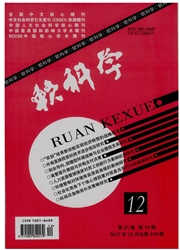

 中文摘要:
中文摘要:
在卖家分散化决策和平台面临弹性需求的基础上,分析了固定收费、交易费、两部收费和利润分成制四种价格模式在双边市场中的应用策略,基于平台所获利润对以上四种收费模式进行了比较。研究发现:尽管交易费或两部收费更有利于平台从卖家身上获取更高比例的剩余,但由于扭曲了卖家的努力水平,因此并不一定能够使平台获得更高的利润;利润分成制和固定费都能够激励卖家达到最优的努力水平,而利润分成制获取卖家剩余的能力更强,因此一定在利润上优于固定费;利润分成制在卖家激励方面优于交易费和两部收费,在剩余索取方面是否优于交易费或两部收费取决于卖家的成本,给定卖家类型和外部性强度,当成本在卖家间的增幅较小时,利润分成制带来的利润最优。
 英文摘要:
英文摘要:
This paper analyzes the strategies of four pricing models which are lump-sum charge, per-transaction charge, two-part tariff and profit sharing applied in two-sided market and compare them by profit platform can get based on sellers with decentralized decisions and elastic demand of platform. It finds following conclusions : firstly, per-transaction charge or two-part tariff does not always provide platform with more profit than that of lump-sum charge despite they can take more pro- portion of surplus form sellers relative to lump-sum charge, because they distort the effort levels of sellers; secondly, profit sharing and lump-sum charge can incent sellers achieving optimal effort degrees and the former one have stronger ability to extract sellers' surplus than the later one, so the former one is more profitable ; lastly, profit sharing is better than per-trans- action charge and two-part tariff in terms of incentives of sellers, but whether it is better in terms of surplus extraction de- pends on the costs of sellers, given the types of sellers and the strength of externality, profit sharing is the most profitable one if the amplification of costs among sellers is relative small.
 同期刊论文项目
同期刊论文项目
 同项目期刊论文
同项目期刊论文
 期刊信息
期刊信息
